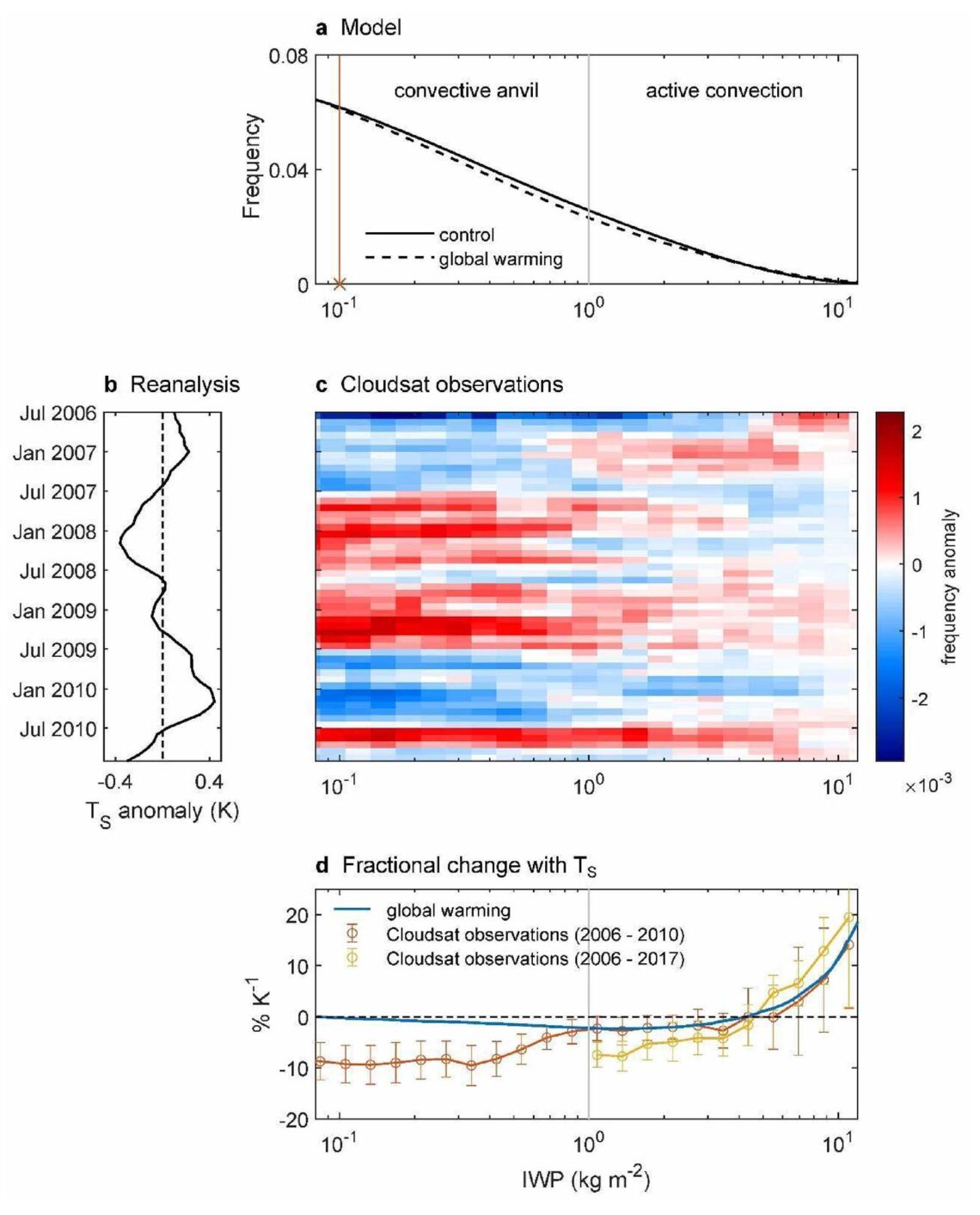March 28th, 2024
Key Findings
- GFDL’s X-SHiELD experimental global storm-resolving model was used to compute the response of cloud ice in simulations of global warming.
- The responses of active sensor measurements of cloud ice to interannual variability and next-generation global storm-resolving model simulations to global warming show similar changes for events with the highest column-integrated ice.
- Ice loading decreases outside the most active convection but increases at a rate of several percent per Kelvin surface warming in the most active convection.
- Changes in ice loading are strongly influenced by changes in convective velocities, suggesting a path toward extracting information about convective velocities from observations.
Maximilien Bolot, Lucas M. Harris, Kai-Yuan Cheng, Timothy M. Merlis, Peter N. Blossey, Christopher S. Bretherton, Spencer K. Clark, Alex Kaltenbaugh, Linjiong Zhou and Stephan Fueglistaler. npj Climate and Atmospheric Science. DOI: 10.1038/s41612-023-00525-w
Under global warming, changes in the location and structure of the deep convection in the tropics have profound consequences for tropical climate. The tropics are characterized by the ubiquitous presence of high ice clouds formed by detrainment from precipitating deep convection. The bulk of these clouds are so-called anvil clouds in extensive formations that shield the convective centers. These can persist for several hours after the decay of active convection and they carry low to moderate ice loads.
The centers of active convection, on the other hand, correspond to a small fraction of the cloudy region and are typically of kilometric scale. Ice loads in the convective centers are very high, reaching tens of kilograms of ice per square meter, and can only be maintained by the strong convective velocities existing at these locations. Changes in ice loading in active convection thus have the potential to shed light on changes of convective velocities with warming.
Tropical deep convection is one of the leading sources of uncertainty in future projections of the Earth’s temperature. In particular, there remain major uncertainties in the radiative response of convective clouds, which can have negative or positive radiative effects depending on their optical depth, and on the response of convective velocities with warming. This response, the focus of this paper, is particularly difficult to quantify due to the small scales involved.
The authors used GFDL’s X-SHiELD experimental global storm-resolving model to compute the response of cloud ice in simulations of global warming. This kilometer-scale model explicitly represents convection worldwide instead of relying on a deep convective parameterization. In comparing the response in the model with the response of active sensor measurements to interannual variability, they found similar changes for events with the highest column-integrated ice. The changes reveal that the ice loading decreases outside the most active convection but increases at a rate of several percent per Kelvin surface warming in the most active convection.
Conducting an additional simulation where the response of vertical velocities is muted, the authors were able to prove that the changes in ice loading are modulated by changes in convective velocities and are not simply set by conditions at the surface. Namely, the ice signal is strongly modulated by structural changes of the vertical wind field towards an intensification of strong convective updrafts with warming.
This study shows the potential of kilometer-scale climate models to interpret high-resolution observations such as those provided by the CloudSat radar measurements. The results indicate that deep convective ice clouds will experience changes at the kilometer-scale and mesoscale, and that these changes are manifest in the presently available high-resolution radar measurements. The fact that changes in the distribution of vertical velocities will be registered in the ice field suggests a path toward extracting information about convective velocities from observations.



